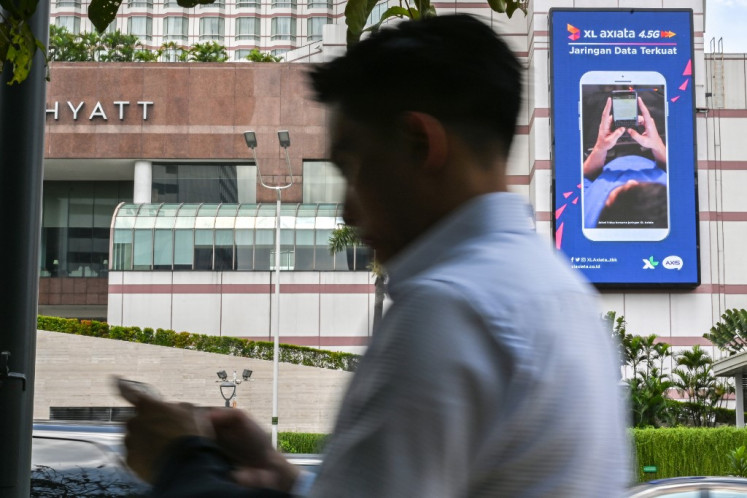Popular Reads
Top Results
Can't find what you're looking for?
View all search resultsPopular Reads
Top Results
Can't find what you're looking for?
View all search resultsNew business model of fintech-banks set to boost digital economy
Change text size
Gift Premium Articles
to Anyone
T
he 2015 World Economic Forum Report predicts that by 2020 Indonesia will become one of the biggest digital markets in Southeast Asia. This highlights wider opportunities for digital finance. The fact that only 36 percent of adults in Indonesia have bank accounts, while the remaining 120 million adults are still unbanked, also further underlines enormous room for it to grow.
In contrast to the vast number of the unbanked population, 132.7 million people are now already connected to the internet as a result of infrastructure development and easy access to smartphones or mobile devices, according to data from the Indonesian Internet Service Providers Association (APJII). This figure has rapidly surged from only 88 million active internet users in 2014.
The banking industry sees the gap and is moving forward by collaborating to improve the system, strategies and functions in order to convince the public that carrying out technology-based transactions is easy. Each business players play their own role based on their capacity to share knowledge and expertise to provide the latest services that can strengthen customer transaction behavior.
(Read also: Fintech Talk: Leveraging capital market through fintech collaboration)
Acknowledging such a huge gap between existing services and potential allowed by technology utilization ahead, the banking industry is developing mobile and internet banking services that so far have succeeded in expanding reachability of services and overcoming geographic challenges.
Such innovation has also managed to enhance efficiency as well as offering more varied options of banking products and services in line with the rising preference for online marketing strategies. By optimizing handheld devices, customers can conduct payments, fund transfers, or even cash withdrawals at the tip of their fingers.
The Financial Services Authority (OJK) reports that the number of e-banking customers skyrocketed by 270 percent from 13.6 million in 2012 to 50.4 million in 2016. In addition, the figure for transactions also climbed strongly by 169 percent from 150.8 million to 405.4 million during the period.
Riding on the wave of technological development, fintech services have seen very positive growth in Indonesia in the past few years. Data from Statista (2017) reveal that the value of fintech transactions in the country has reached US$ 15 billion.
The widespread use of digital technology in the country has prompted the government to make the digital economy one of its most important priorities. Indonesia is expected to arise as the biggest digital economic giant in the region with potential transactions hitting Rp 1.69 quadrillion ($128.7 billion) by 2020.
Through its service innovations and products, fintech is believed to be able to push the digital economy by opening access for people from all social classes to financial services. Due to its mobile and efficient nature, it is expected to overcome some challenges that cannot be addressed by traditional financial services.
The emergence of fintech is inevitable and its expansion is unstoppable. Both banks and fintech try to offer best experiences for customers and therefore are complementary to each other. The bank-fintech synergy will ensure fewer blind spots in both services as a result of combining their strengths.
To advance bank-fintech collaboration, it is necessary to assess the business model to be adopted. An agile, flexible and customizable business model is an ideal prerequisite. At the same time, the banking industry’s Secure, Swift and Simple (3S) business principles must be maintained.
In terms of human resources, fintech is powered by young talent, which is innovative, creative, dynamic and responsive in catering to customers’ needs. In contrast, the banking industry with its more mature business model, is largely driven by professionals with deep knowledge of the financial industry and a wide customer database.
Currently, there are a number of banking products and services supported by fintech, such as virtual accounts that allow payments or financial transactions without a bank account. Accessing a virtual account is as easy as using a smartphone. Customers can receive or expend funds through a mobile application. Fund disbursement can also run more efficiently with the aid of fintech. Furthermore, the banking industry can enjoy larger benefits of fintech, especially in the areas of payment and peer-to-peer (P2P) lending.
At the end, the alignment between the mission and commitment of banks and fintech providers, will bring access to quality financial services for Indonesians at large, including those who are still unbanked, and will contribute to the establishment of the digital economy as aspired to.











